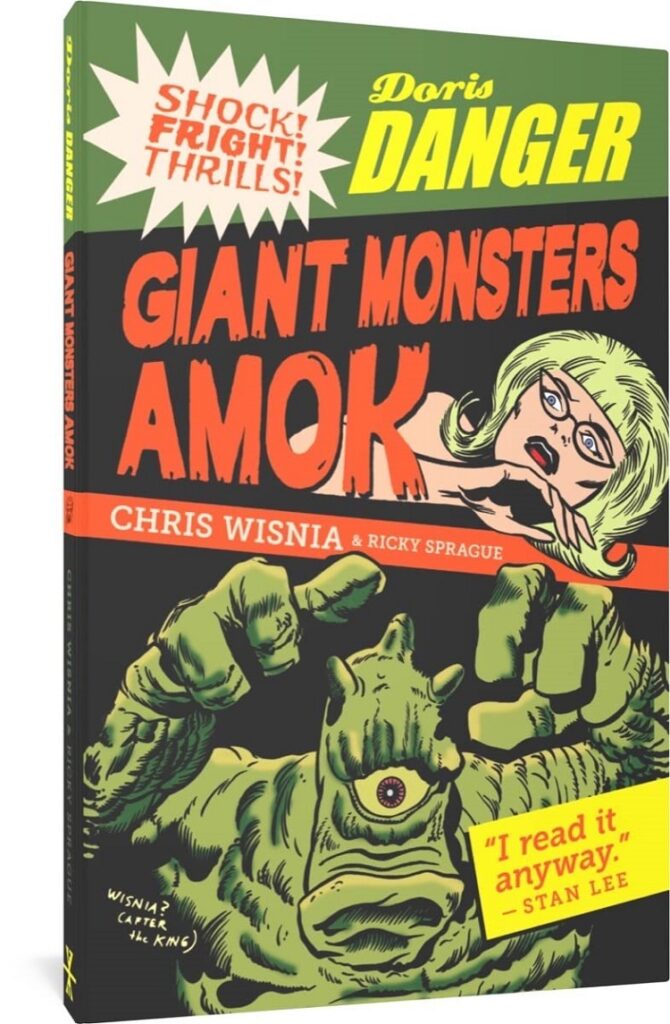
As the American comic book industry developed in the ’60s, it became significantly less diverse. Superheroes eventually became, essentially, the only thing mainstream American comics were about – except for black and white indie comics that were either deliberately offensive or remarkably twee. Entire genres like Western comics and romance comics essentially disappeared.
One lost American comic genre was monster comics. In these comics, people traveling to environs unknown would encounter some terrifying, physics-defying monstrosity. These came about in the late ’50s and ’60s. Since they couldn’t feature traditional vampires and the like (the Comics Code frowned on that) they were just… odd.
And some of the greatest classical comic artists and writers were writing these eight-page stories weird, lumpy monstrosities in the outback or some remote island. Steve Ditko, Jack Kirby, and Stan Lee regularly wrote stories of these oddities.
Doris Danger: Giant Monsters Amok is a tribute to this forgotten era. Posited as a collection of absolutely true stories, the collection tells the disjointed story of Doris Danger, female journalist whose beat was giant monsters, robots, and other oddities of the world.
The old monster comics were all one-offs, single stories. Giant Monsters Amok envisions a monster comic world with a continuity, where the monsters were both pursued, and created by covert government agencies. There’s an enormous conspiratorial story woven in this collection.
It pretends to be the collected remaining issues of a comic magazine, Tabloia. The collection works very hard to keep up the mystique of being a true-life compilation of an almost lost resource. So, they went with the best materials they had, even if some of the pages are from a kid’s collection scrawled on by crayon, or the color printing is completely offset.
Giant Monsters Amok is a joking tribute to a past era of comics. The joke is twofold – first that these weird monster comics existed, and wouldn’t it be fun if they were all connected? The second part of the joke is the tendencies of comics in the ’60s, with the giant boxes of dialogue. With the footnoted references to issues past (all of which, in this case, do not exist.)
The art style is very reminiscent of early ’60s Jack Kirby, and lovingly reproduced in as un-remastered a format as possible. Sometimes the colors are drained. Printing errors and torn pages and all other “artifacts” of the poor preservation of the material are abundant. It is a fun book for a very precise audience.
It is also best taken in limited doses. Recreating the idiosyncrasies of late ’50s and early ’60s comics (giant word balloons, call backs to old issues, declamatory dialogue) can wear thin as a joke over a long reading session. The levels of irony each page is drenched in is clever, and maybe sometimes a little too clever. But nothing can take away the loving attention to detail in this tribute to a very specific aspect of Americana. Doris Danger: Giant Monsters Amok is a book for a small audience, but it might deliver just what they need.
Doris Danger: Giant Monsters Amok was released by Fantagraphics Underground.
1 Comments
Leave a Comment
You must be logged in to post a comment.
That sounds fantastic.